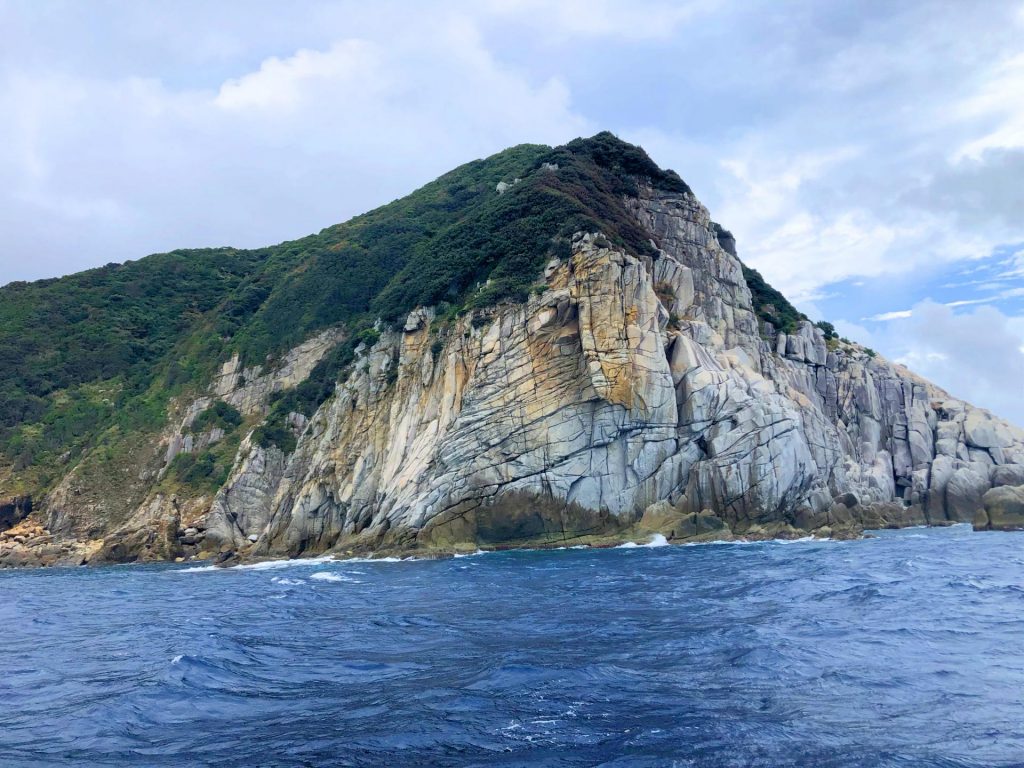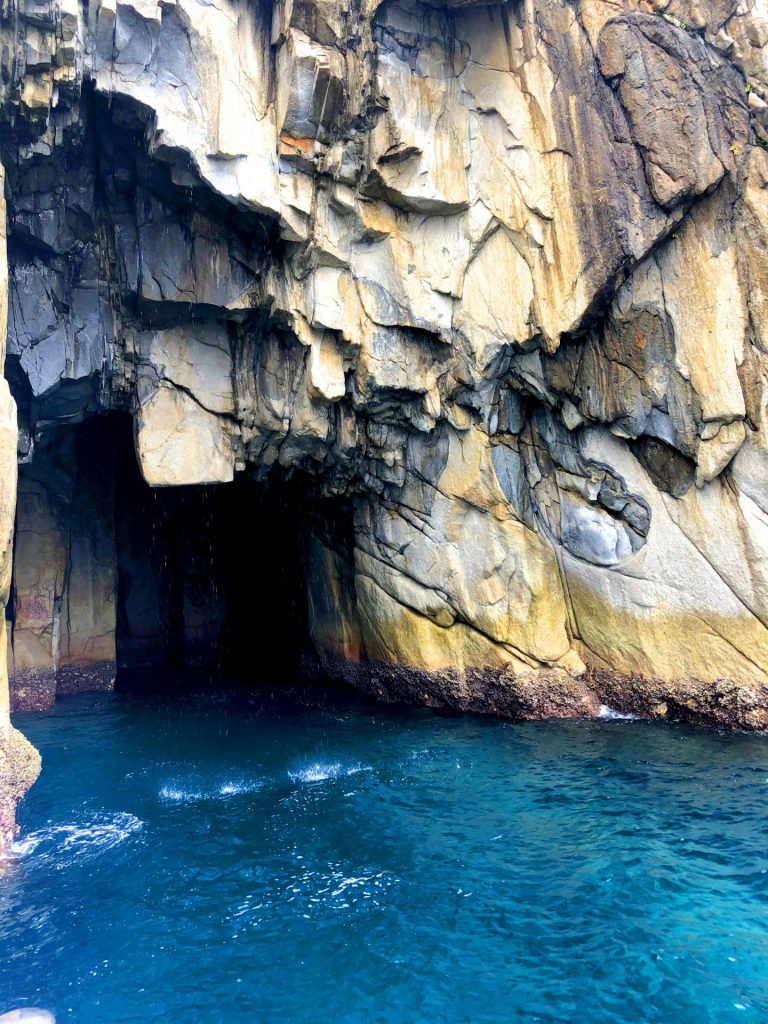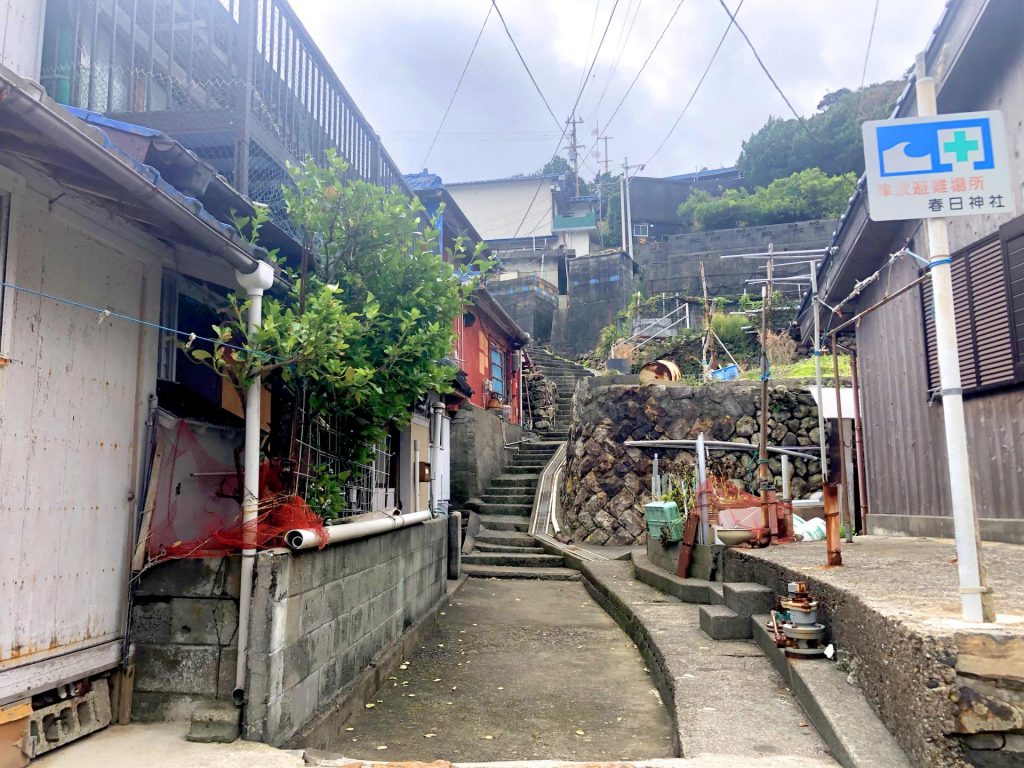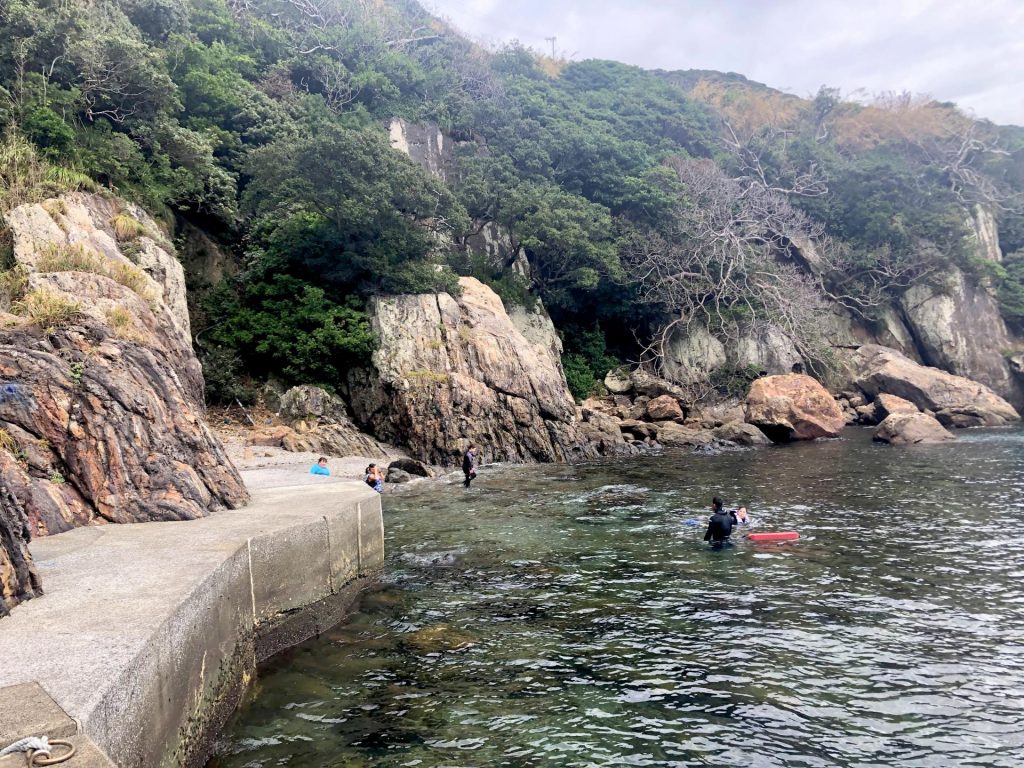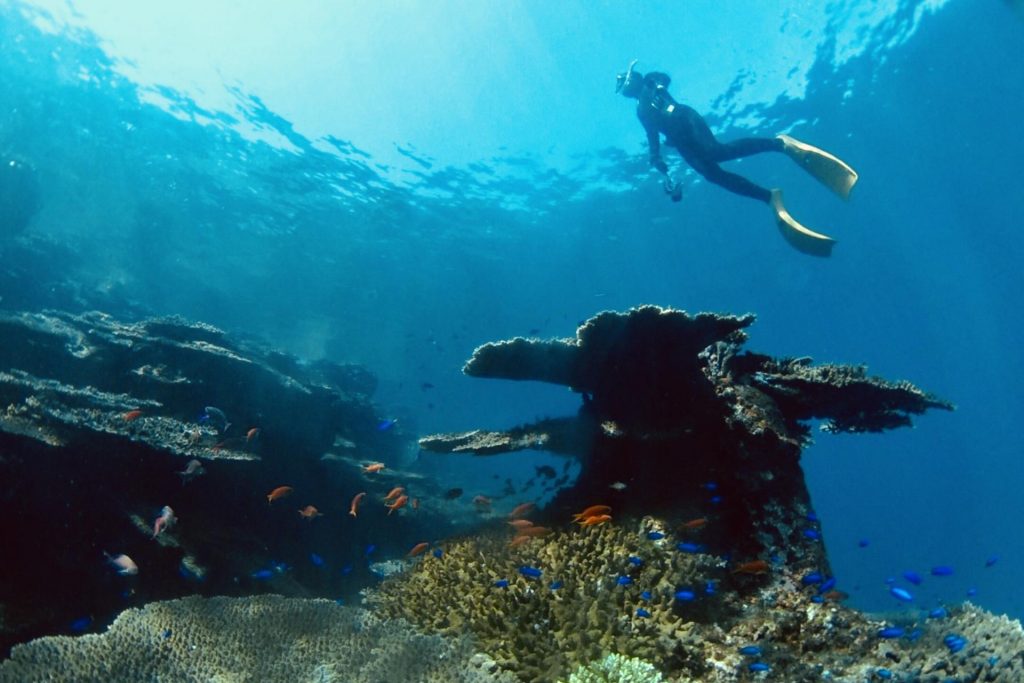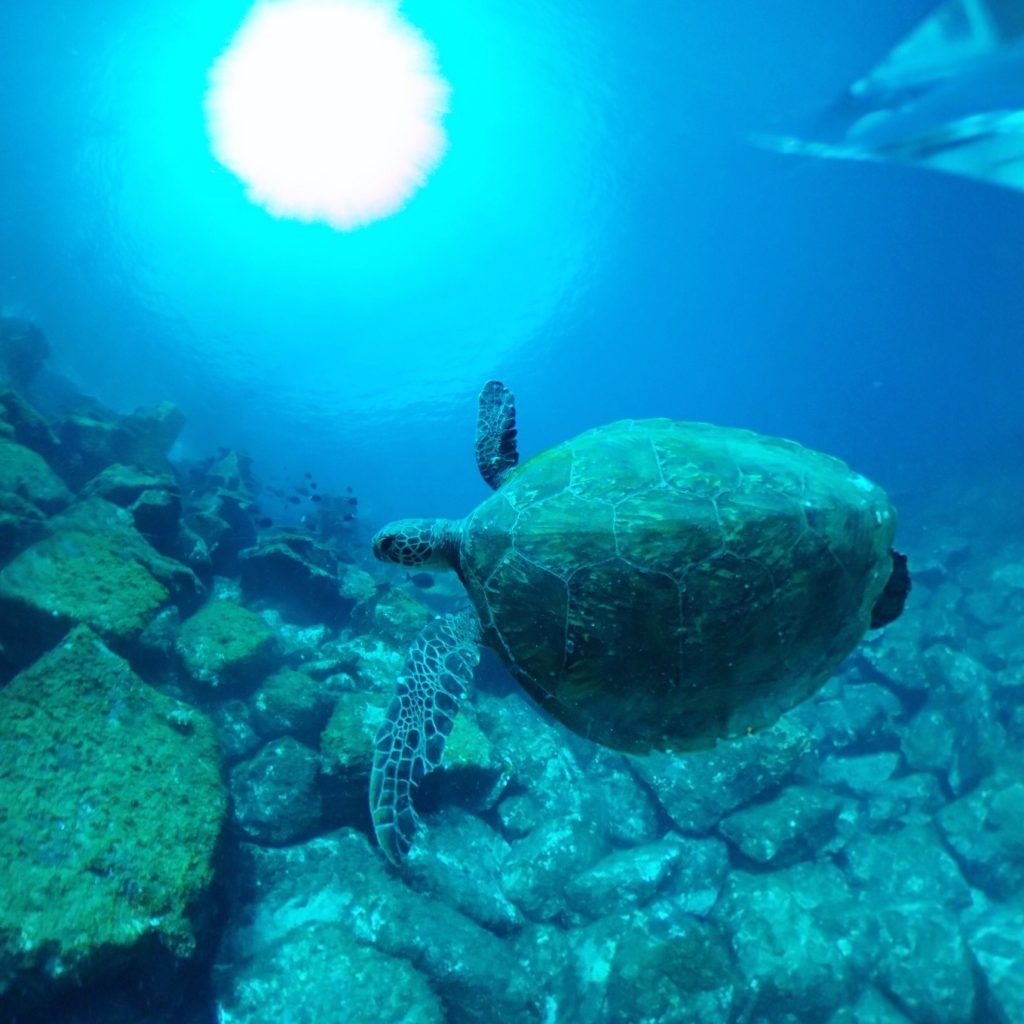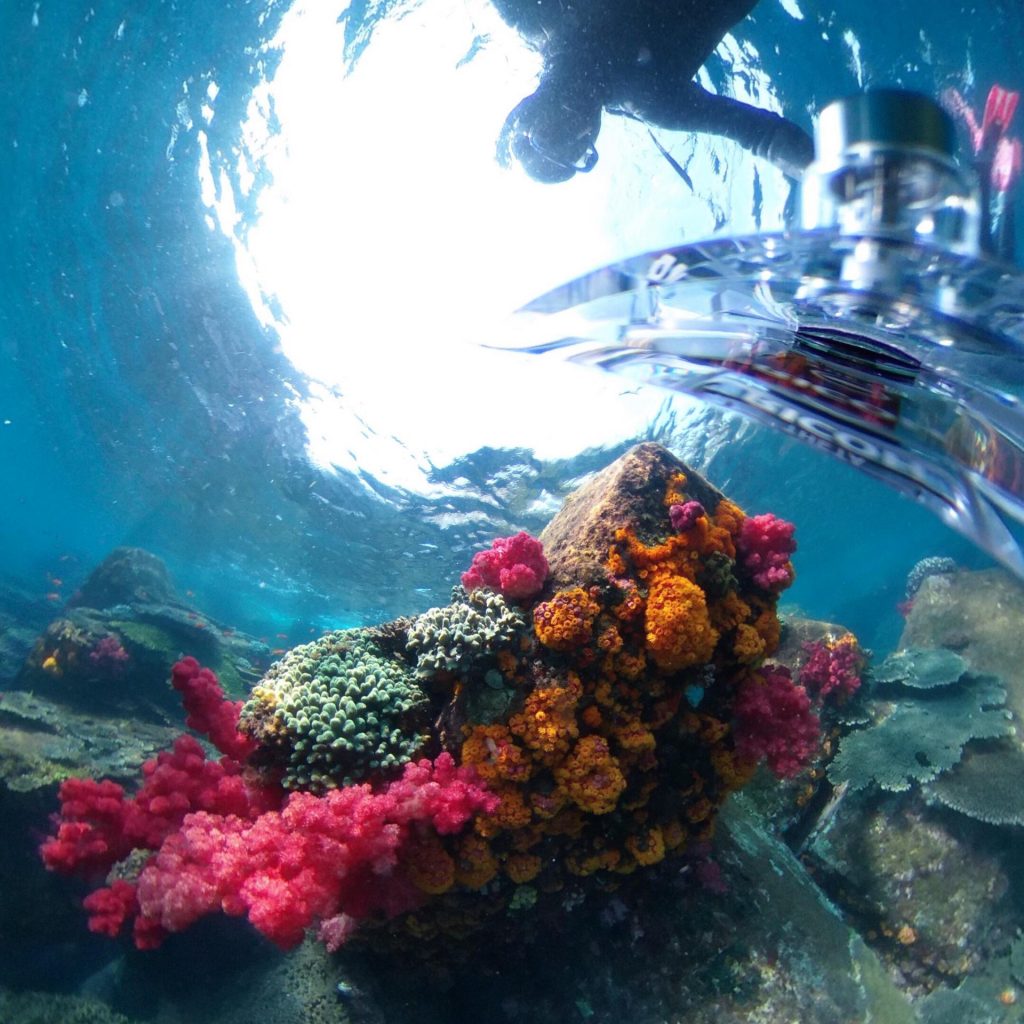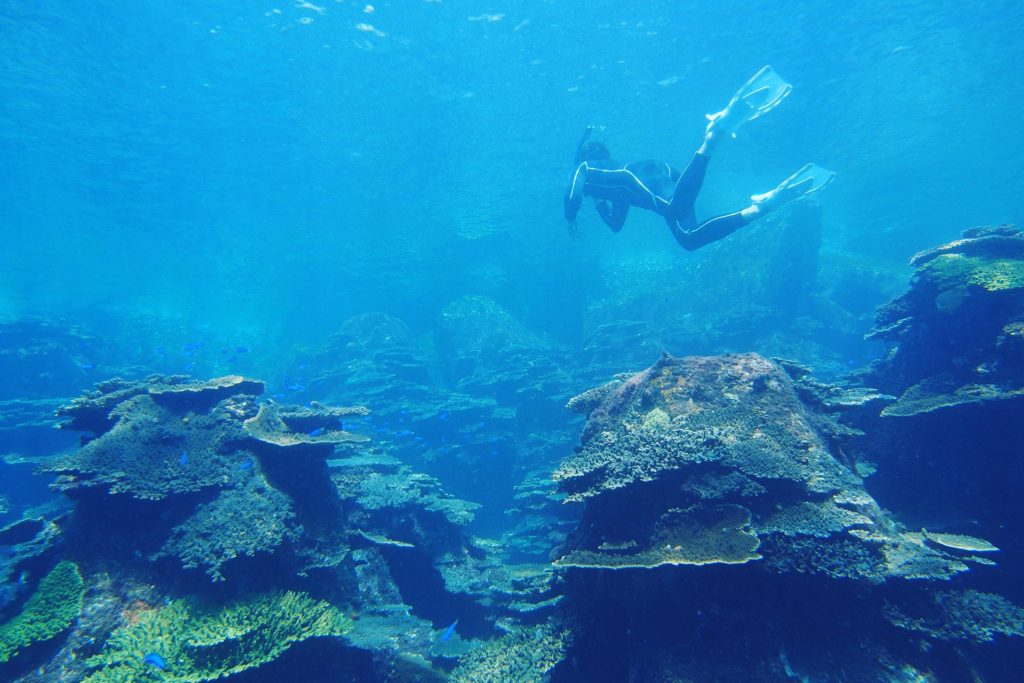A warm Pacific breeze blows at our backs and the boat rocks gently as it sets out from the sleepy Sukumo Port as we begin our snorkeling adventure. We begin to breathe deeper and relax. We’ve just left the mainland of Kochi Prefecture on Shikoku Island but it already feels like a world away from the hustle and bustle of Tokyo where I was just yesterday.
First up is a cruise around Okinoshima Island (not to be confused with the sacred island in Kyushu). This small island (population: 194) is a fisherman’s paradise. Accommodation on the island offer free boat services to the best fishing spots. Sure enough, we pass an outcropping of rocks (calling them islands would be generous), as several seemingly stranded men are holding only fishing poles. Wondering what happens when a tsunami or even a big wave hits, I wave and comment that they must really love their sport to intentionally maroon themselves on a deserted rock. I also secretly hope that the accommodation remembers to pick them up later in the day.
Snorkeling diving Kochi Shikoku Japan
Turning a corner along Okinoshima Island, the topography changes and a jagged cliffed coastline plunges straight into the sea. A series of caves are visible, offering a glimpse of the teal blue ocean floor and other adventures that await. When the ocean is calmer, sea kayaking and snorkeling tours stop off at this point and explore inside.
From Okinoshima, we continue briefly to uninhabited Himejima before reaching our final destination—Uguru Island. Uguru is remote by anyone’s definition and going onshore is a step back in time. The village consists of perhaps twenty wooden homes, built practically on top of each other, continuing straight up the mountainside. The village is so steep and winding that there are no roads and therefore no cars on the island.
A huge elementary school takes up the center of the village, now closed down and used as a community center. Asked why the village ever needed such a large building in the first place, the guide shrugs and simply says, “Politics.” A pair of obachans (older women) shoot the breeze on a nearby bench. I wonder what they still have to talk about after decades of chatting on that same bench. A lone fisherman—probably in his 80s—stands on the wharf. Answering our hearty “Konnichiwas” with a grunt and a wave of the hand, he soon disappears into the village. Because of the virus, the villagers are less welcoming to outsiders than before and we are asked not to enter the village itself. Officially, the population stands at 27 with 90% classified as seniors. The guide adds that this number has somehow held for a long time so the actual population is more likely in the single digits.
It’s time to snorkel and, after some quick safety tips, fins and masks go on and we jump in the ocean. The water is perfect and the bay offers some coral outcroppings, varieties of tropical fish, an occasional blowfish and even apparently a sea turtle that darted away. I am an advanced open water diver, and during a bento lunch, the captain asks if I would like to visit the outer reef. “Absolutely!” I exclaim.
Taking the two minute boat ride, I jump out to a wall of coral growing directly on the concrete tetrapods (an erosion prevention measure found on much of Japan’s coastline). Nature finds ways to beautify anything man made and I am pleased that something so ugly above the surface can turn into something so beautiful below. Judging from the large group of scuba divers also visiting the island, there must be other great dive locations on the island. Alas, there is no time today, but I will definitely come back to explore more.
Another reason to return is a tempting hike up 252-meter Mt. Ryuzuyama. Apparently there are still World War II bunkers along the trail, and occasionally people catch glimpses of a natural phenomenon known as the “Daruma Sunset.” These sunsets are so called because the silhouette of the sun as it melts into the horizon looks just similar to the red Japanese talisman, called a daruma floating on the ocean. This mirage apparently occurs when the sunlight is refracted by the warm air above the ocean surface interacting with the cold air in the sky.
The return ferry offers time to contemplate the day’s journey. Uguru Island is an amplified version of the challenges Japan faces as a whole. A shrinking rural population devastates local economies and increases challenges such as healthcare, employment and education for those who remain. At the same time, fewer people means increasing wildlife populations, a pristine environment, a chance for nature to flourish, perhaps even resulting in more tourism. Rural Japan has lived in harmony with nature for centuries though and I hope that the country, as well as Uguru Island find that perfect balance between man and nature. It is certainly a special place that is worth the extra effort to visit.
Getting There
By Plane: Fly into Kochi Ryoma Airport. Flights are available from Tokyo (Haneda), Osaka, Kobe, Nagoya and Fukuoka. If driving, rent a car at the airport. If taking public transportation, take a bus from the airport to Kochi Station (20 minutes).
By Train: 30 minutes from Nakamura Station on the Tosakuroshio Tetsudo-Sukumo Line, 2.5 hours from Kochi Station on the Dosan Line Limited Express (change for the same train at Nakamura Station).
By Car: 30 minutes from Shimanto City, 2.5 hours from Kochi City.
Essential Information
Ferry & Activities:
Azure (also offers accommodation)
Uguru BOX
Accommodation:
Sukumo Resort Yashinoyu (¥15,000-¥20,000 per person)
Akisawa Hotel (¥6,000-¥8,000 per room)
Best Time to Travel: May-October
Must Eats: Katsuo no tataki (Seared, sliced bonito served with ginger, garlic, and spring onions seasoned with vinegar, citrus, and either salt or soy sauce)
For more information on Uguru, Kochi and how to get here, visit Kochi’s website at Visit Kochi Japan.
Related Stories
- Shikoku Road Trip: Kochi by Camper Van
- Japan Camping Guide: Camping in Shikoku
- Quality Brew from Shikoku
- Japan Eco Track: Cycling Mountains to Rivers in Shikoku
- Japan Eco Track: Kochi Kōyō Cycling
Snorkeling diving Kochi Shikoku Japan
Snorkeling diving Kochi Shikoku Japan




